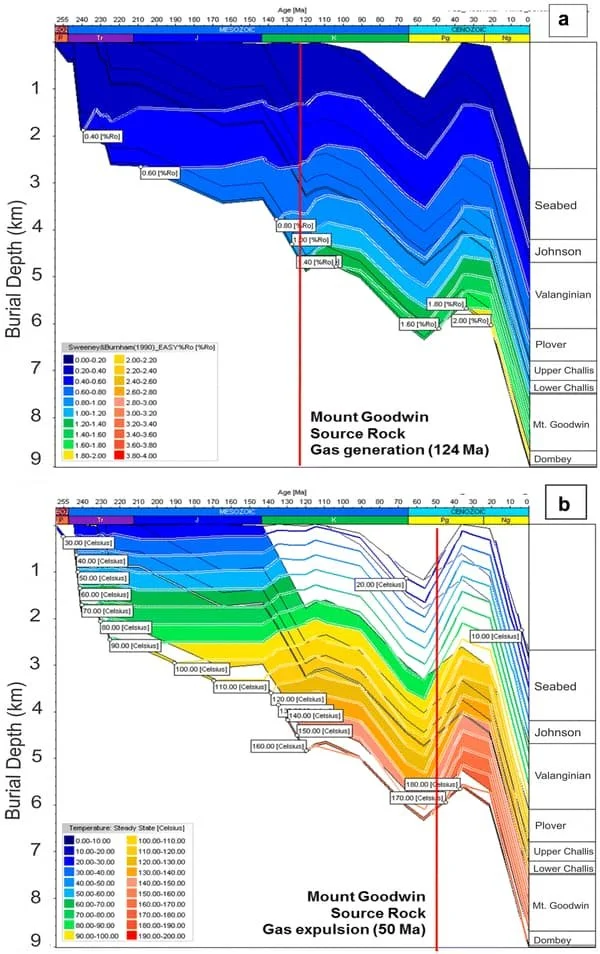What is heat flow?
Heat flowing through sedimentary rocks dives the chemical reactions that transform organic matter into petroleum, and has a decisive influence on the generation of hydrocarbons in sedimentary basins.
Within the context of frontier basin exploration, heat flow data are used primarily to:
(1) constrain thermal and geochemical basin evolution models, thereby allowing models that are inconsistent with present-day seafloor thermal conditions to be discarded;
(2) constrain temperature dependent subsurface oil and gas thermal windows;
(3) calibrate regional estimates of heat flow based on Bottom Simulating Reflectors (BSR’s) observed in seismic data, and
(4) determine seafloor thermal conditions prior to drilling as part of a hazard assessment with respect to tool selection, the presence of gas hydrate or free gas, and choice of casing materials.
Heat “flows” and follows the path of least thermal resistance. In other words, it follows the path of highest thermal conductivity. This means that heat will be refracted and focused as it moves upward through basement and sediment rocks, analogous to the way water follows the path of least hydrologic resistance as it moves through valleys down steep mountains (high gradient) and spreads out into wide deltas near the coast (low gradient).
Numerically, “Heat Flux” (q) is the product of the thermal gradient (dT/dZ) and sediment thermal conductivity (K):
q = K * dT/dZ
The units of Q are Watts per square meter (and a Watt is one Joule per second), so what we have is a RATE of heat transfer per square meter of seafloor.
The heat flow probe measures the latter two items (dT/dZ and K) insitu, meaning that temperature and thermal conductivity measurements are made at multiple points within the sediment column up to six meters below the seafloor.
Technically, “Heat Flow” is the spatially integrated heat flux. In other words, if an area of 1,000 m2 has a measured heat flux of 1 W/m2, then the integrated heat flow is 1,000 W coming out of the 1,000 m2 area.
Within the oil and gas industry, the distinction between heat flux and heat flow is purely academic and the general term “Heat Flow” is used interchangeably.
Because heat flux (or “flow” if we want to use terms interchangeably) is a rate, it depends strongly on the thermal conductivity of the material that the heat is flowing through. Sand is predominantly quartz with a “high” thermal conductivity (>1.25 W/m-K), and clay has a “low” thermal conductivity (<0.9 W/m-K). Mixtures will lie somewhere in between. In looking at a thermal conductivity profile measured by the heat flow probe, deviations (large steps) provide insight into the type of material. These measurements of near-surface physical properties can be integrated with other geophysical data (namely bathymetry, backscatter, and seismic data) in order to understand vertical migration pathways for mobile fluids and gases.


